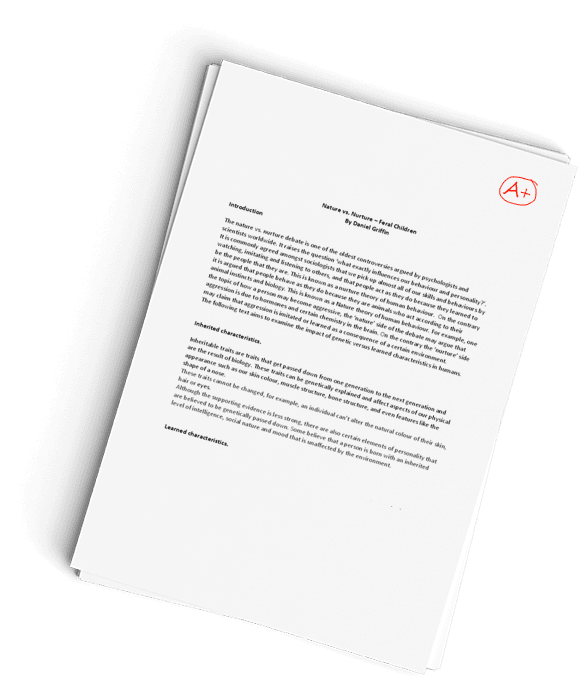Northeastern University Prescriptive Descriptive & Heuristic Decision Models Discussion
Question Description
I need two comments, each part is around 100 words.
Part 1:
1) Decision models are either descriptive, heuristic, or prescriptive. A descriptive model describes what people actually do, or have done. On the other hand, a prescriptive model recommends what people should do, in practice. However, heuristic models imply what people should do, in practice.
In regards to some key requirements when making effective decision models, we need to ensure there are no systematically biased outcomes, which can result from heuristic models. This concept is further explained in Question #2 below.
In addition, we must ensure that there is enough historical data, being used to develop the descriptive model. We must also confirm whether the variables being included offer a complete picture of what we are looking at. Lastly, we must be aware of the source of the data, and ensure that the dataset is complete and free of error. Only then can we be sure that the model correctly explains what is.
Finally, prescriptive models need to have the right set of parameters included. As well, these models must have weights for each parameter applied in a way that optimizes the objective variable. Lastly, given that forecasts are prone to errors, we must also ensure that the standard error is minimized to the lowest value possible.
Hence, when evaluating the validity of these models, we must take in to account the degree of biases in heuristic models, the amount of historical data being used in descriptive models, as well as the types and weights of the parameters being used to develop predictive models.
2) Heuristic models are becoming more common in managerial practices across the enterprise today. The reason why managers might use heuristic, as opposed to descriptive or prescriptive models, is because heuristics offer the ability to make fast-paced decisions to stay competitive in the workplace. To add to the appeal, they reduce the mental effort required to make time-sensitive decisions, as people tend to prefer utilizing heuristic approaches as a type of cognitive laziness. On the other hand, descriptive and prescriptive models are based on evaluating the problem through an analytical process, which takes up considerable time and effort that managers just do not have.
Often, managers come across situations where they must make decisions that have a risk factor associated. In these situations, there may not be enough time to fully calculate the risk. Without fully understanding the risk, managers can sometimes end up making the wrong decision, which costs their team and organizations large sums of money. As a result, heuristics are prone to cognitive biases, and can trick managers in to making rushed decisions without evaluating all the consequences.
In conclusion, I believe each model brings its own set of advantages and disadvantages. By understanding the urgency, severity, as well as priority of a particular decision, as well the strengths and limitations of the descriptive, heuristic, or prescriptive models, managers can ultimately improve the way they make data-driven decisions, all of which have a direct, immediate consequence on all ends of the enterprise.
Part 2:
One:
Regardless of which type of decision model you are using, you should first consider what questions you are trying to answer about the data. Likely, thinking about this will help guide in which type of model you wish to use. Lets say you are trying to figure out which between descriptive and prescriptive, you wish to use. It might make more sense for you to consider descriptive model if the goal is to dig up information about the dataset to use for further evaluations like describing relationships. If your goal is to determine the best course of action to maximize or minimize some metric, then it might make more sense for you to use a prescriptive model. Once you have a good idea of what question you are trying to answer, you next need to figure out which features you wish to use from the dataset and decide how to weight each feature or rank each feature (decide the importance). Finally, you will need to fit your model to the data, testing against some pre-determined metric accuracy score report, confusion matrix, for example.
There are many ways to check the validity of the model that was selected. You can use some metric to judge how well the model describes trends in the data such as accuracy score, or anything with the confusion matrix. You can also implement a variety of cross-validation techniques depending on which model you use. Cross-validation helps judge how well as model is performing with test data (Ali, 2015).
Two:
A manager might favor a heuristic model over a prescriptive model when finding the optimal model is either too time consuming, not possible, or has little payoff (Gere, 2017). In general, prescriptive models take longer to develop than heuristic models. So, if the task at hand simply requires a method that is more efficient than random guessing but doesnt need to be the most optimal, then the heuristic model technique might be a great option. Heuristic models are also faster to develop, so if time is a limiting factor, then this might be another reason heuristic models are selected over prescriptive models. It is important to note that the outcomes achievable in theoretical modeling is hard to achieve in the real world (Cuofano, 2020). This is another reason that managers might prefer a faster model that provides a good enough decision. Many times, the unattainability of the models outcomes is due to unknown variables or increased uncertainty that takes place in the world. This includes examples like individual decision making. It is also important to note that heuristics oftentimes involves selecting the most important data to model and forget the rest (Cuofano, 2020).
Lets take this simplified business world scenario to apply these points. A manager wishes to apply decision models to decide when certain inventory is ordered. Since this is a relatively small business, and the inventory ordered does not expire (lets say its hardware or cleaning supplies), the manager just wants to base ordering supplies on historical data. In this scenario, the manager doesnt need to minimize holding costs, or other costs to acquiring inventory. The manager just wants a good idea of when to expect to put in orders. A heuristic model could be employed using historical data to provide an estimate of when to order new supplies.
Have a similar assignment? "Place an order for your assignment and have exceptional work written by our team of experts, guaranteeing you A results."








